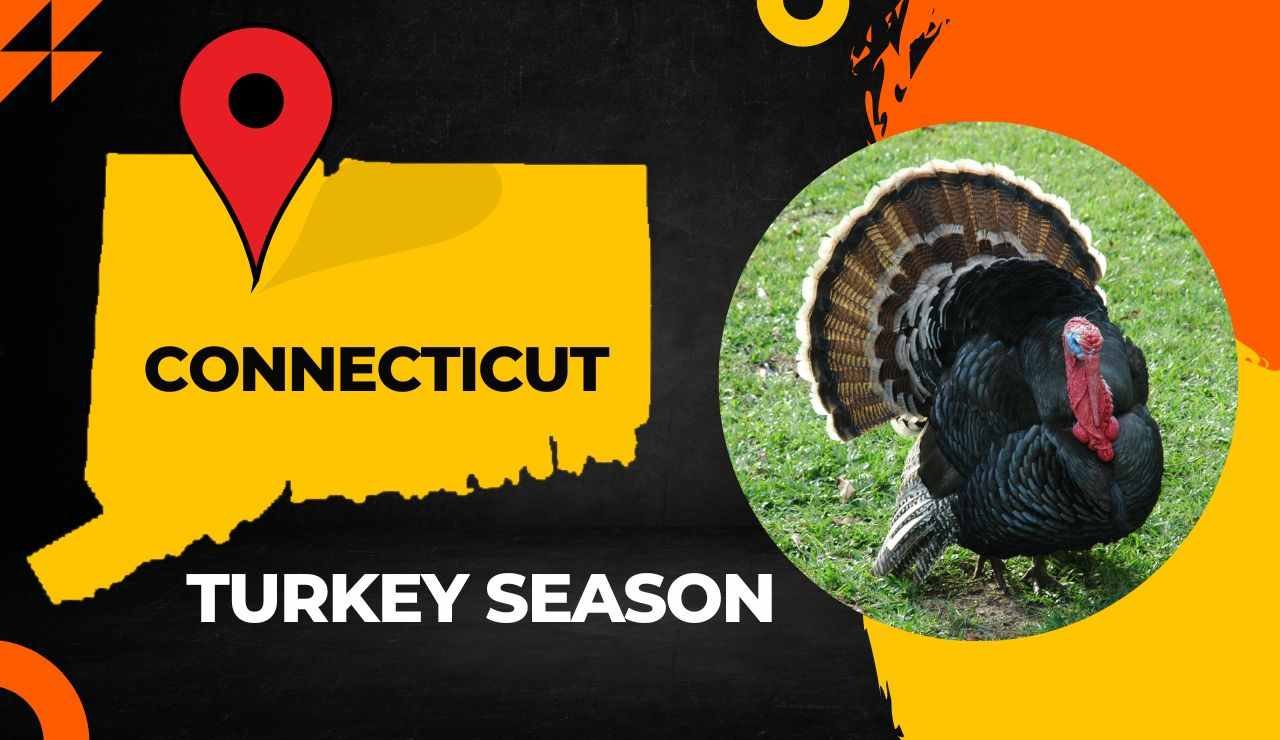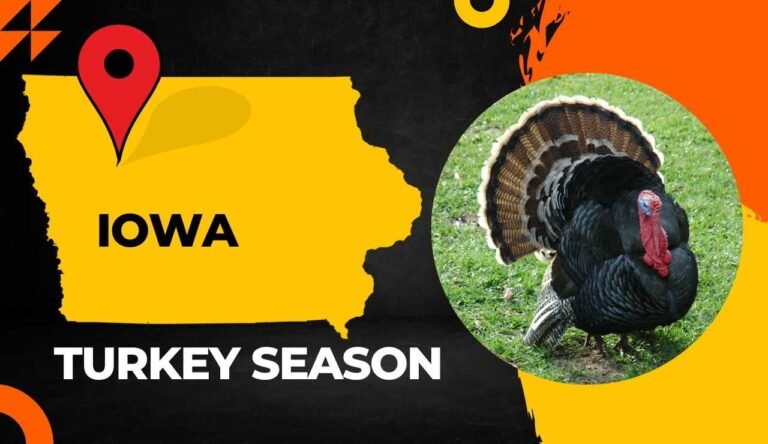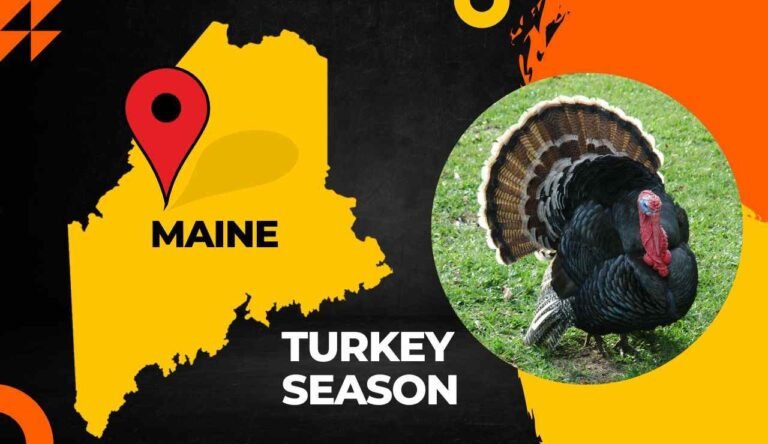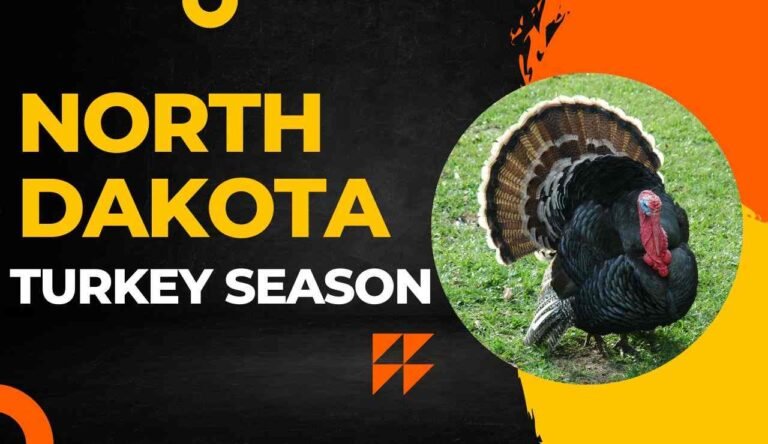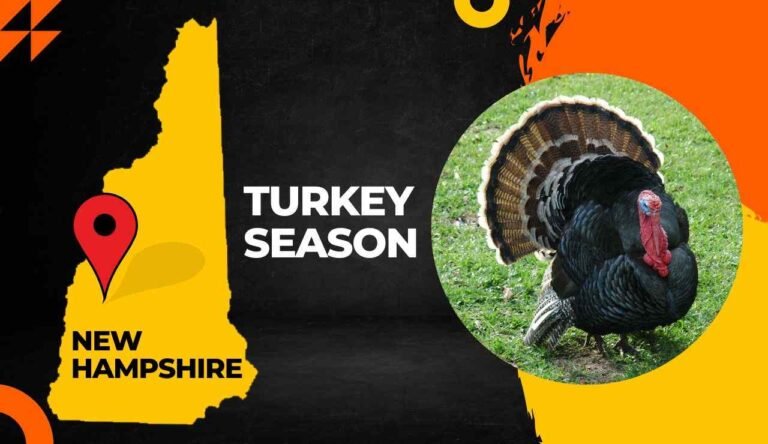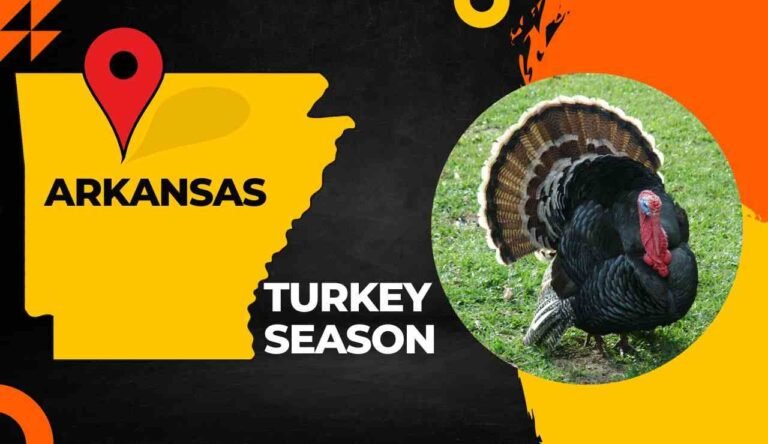Connecticut Turkey Season 2025-2026: [Dates, Regulations, Bag Limits & More]
If you’re gearing up for gobbler chasing in the Constitution State, you’ve landed in the right spot. Connecticut’s wild tom population has been thriving, and the 2025-2026 opportunities are better than ever. Whether you’re a first-timer wondering where to start or a seasoned hunter fine-tuning your spring setup, this guide breaks down everything: official dates, bag limits, management zones, license requirements, and those tricky regulations that can trip you up if you’re not careful.
Let’s dive into what makes the Nutmeg State a sleeper destination for Eastern wild birds—and how to make the most of your time in the woods.
What This Guide Covers
This post walks you through Connecticut’s complete wild tom hunting framework for the 2025-2026 cycle. You’ll find precise opening and closing dates for spring and fall opportunities, youth training days, archery versus firearms distinctions, zone-specific rules, mandatory stamp requirements, and answers to common questions. Plus, we’ll touch on related upland game birds and point you toward the official sources to double-check before you head out.
Quick Reference: Connecticut Wild Turkey Season Overview 🗓️
Here’s a snapshot of the key hunting periods and methods for 2025-2026:
| Season Type | Dates | Methods Allowed | Bag Limit |
|---|---|---|---|
| Junior Spring Training Days | April 19–26, 2025 (excluding Sunday) | Shotgun, Archery, Crossbow | Part of spring bag limit |
| Spring (All Hunters) | April 30 – May 31, 2025 | Shotgun, Archery, Crossbow | 5 bearded birds |
| Fall Archery (Private Land – All Zones) | September 15 – December 31, 2025 | Archery, Crossbow | 2 either-sex birds |
| Fall Archery (Zones 11 & 12 Private Land) | January 1–31, 2026 | Archery, Crossbow | 2 either-sex birds |
| Fall Archery (State Land) | Sept 15 – Nov 18, 2025 & Dec 24–31, 2025 | Archery, Crossbow | 2 either-sex birds |
| Fall Firearms | October 4–31, 2025 | Shotgun | 3 either-sex birds |
Note: Spring 2026 details are projected based on regulatory patterns—check the official Connecticut DEEP Wild Turkey Hunting page closer to April 2026 for confirmation.
All Connecticut Turkey Seasons: Deep Dive into 2025-2026 Dates & Zones
Spring Gobbler Season 🌸
This is the marquee event. The woods come alive with gobbles echoing off hillsides, and your setup near a roosting area can make or break your morning.
| Hunt Type | Season Dates | Land Type | Bag Limit | Legal Methods |
|---|---|---|---|---|
| Junior Training Days | April 19–26, 2025 (no Sunday) | Private & State Land | Counts toward 5-bird limit | Shotgun 20ga+, Archery, Crossbow |
| Regular Spring | April 30 – May 31, 2025 | Private & State Land | 5 bearded birds total | Shotgun 20ga+, Archery, Crossbow |
Hunting Hours: Half-hour before sunrise to sunset.
Key Points:
- You can harvest up to five bearded longbeards across both private and state land combined
- Shotguns must be 20-gauge or larger, using #4, 5, 6, 7, or 7½ shot
- Crossbows are legal (minimum 125 lbs draw weight, 18-inch bolts)
- Decoys are permitted (but no live decoys or electronic calling devices)
I remember my first spring hunt in the Cockaponset State Forest—nothing beats the rush when a tom answers your slate call at dawn. Just don’t forget your Resident Game Bird Conservation Stamp or you’re technically breaking the law, even if you have your base hunting license.
Fall Archery Season 🍂
Autumn offers a longer window and relaxed bag limits. You’re not restricted to bearded birds, which means hens are fair game (pun intended).
| Zone/Land Type | Season Dates | Bag Limit | Legal Methods |
|---|---|---|---|
| Private Land (All Zones) | Sept 15 – Dec 31, 2025 | 2 either-sex | Archery, Crossbow |
| Private Land (Zones 11 & 12 only) | Jan 1–31, 2026 | 2 either-sex | Archery, Crossbow |
| State Land Bowhunting Areas | Sept 15 – Dec 31, 2025 | 2 either-sex | Archery, Crossbow |
| State Land (General) | Sept 15 – Nov 18, 2025 & Dec 24–31, 2025 | 2 either-sex | Archery, Crossbow |
Important: Starting October 1, 2025, Sunday hunting on private land is now legal for wild toms (and most game species) thanks to Public Act 25-138. Migratory birds remain off-limits on Sundays.
Fall Firearms Season 🎯
Short but action-packed, this October window lets you use shotguns on both public and private ground.
| Season Dates | Land Type | Bag Limit | Legal Firearms |
|---|---|---|---|
| October 4–31, 2025 | Private & State Land | 3 either-sex | Shotgun 20ga+ (#4, 5, 6, 7, 7½ shot) |
Hunting Hours: Half-hour before sunrise to sunset.
Special Condition: You can use a dog to hunt wild birds during fall firearms on private land only—no dogs allowed during other opportunities or on public ground.
Related Upland Game Birds in Connecticut 🕊️
While you’re out there, you might encounter other feathered friends worth pursuing:
- Ring-necked Pheasant: January 1 – February 28, 2026 and October 18 – December 31, 2025 (Junior Day: October 11, 2025)
- Ruffed Grouse: October 18 – November 29, 2025
- Bobwhite Quail: October 18 – November 1, 2025
- Woodcock: October 23 – December 13, 2025
All upland bird pursuits require the same Resident Game Bird Conservation Stamp ($28 for residents, same price for non-residents). Daily bag limit for pheasant is 2 birds, with a 10-bird annual cap. If you’re planning a multi-species hunt, Connecticut’s diverse habitat—from coastal marshes to hardwood ridges—makes it a hidden gem in the Northeast. For contrast, check out how Alabama’s turkey season runs much earlier in the year with different gobbler behavior.
Connecticut Turkey Regulations Checklist ✅
Before you step into the field, make sure you’re following these rules:
- No Baiting: Using bait (including grain piles) to attract birds is prohibited year-round.
- No Electronic Calls: Mouth calls, slate calls, box calls are fine—but electronic or battery-powered devices are illegal.
- No Roosting Shots: Shooting a bird while it’s perched in a tree is forbidden.
- No Cooperative Drives: You can’t organize group drives to push birds toward waiting hunters.
- Calling for Others: You may call for another hunter only if you possess a valid Resident Game Bird Conservation Stamp and (on private land) written landowner consent.
- Written Landowner Permission: You must carry an official DEEP consent form signed by the landowner when hunting on private property.
- Tagging & Reporting: Immediately upon harvest, complete a Harvest Tag and keep it with the carcass until processing. Report your harvest online.
- Sunday Hunting (New for 2025): Legal on private land starting October 1, 2025, except for migratory birds. Hunting within 40 feet of blazed public trails remains prohibited on Sundays.
- Fanning Discouraged: While not illegal, using a tom fan to sneak in on birds is strongly discouraged for safety reasons.
Connecticut’s regulations are enforced by the Department of Energy and Environmental Protection (DEEP), and violations can result in fines or license suspension.
Connecticut Turkey License & Tag Fees 🎟️
Here’s what you’ll pay to chase longbeards legally in the Constitution State:
Resident Fees
| License/Permit | Cost |
|---|---|
| Firearms Hunting License | $19 |
| Small Game & Deer Archery Permit | $19 |
| Resident Game Bird Conservation Stamp (Required for wild birds) | $28 |
| Free Landowner Game Bird Stamp (10+ contiguous acres) | Free |
Youth Discount: Residents aged 16–17 pay 50% off license fees.
Non-Resident Fees
| License/Permit | Cost |
|---|---|
| Non-Resident Firearms Hunting License | $91 |
| Non-Resident Small Game & Deer Archery Permit | $91 |
| Resident Game Bird Conservation Stamp (Required) | $28 |
| 3-Day Out-of-State Bird Hunting License | $35 |
Pro Tip: Non-residents pay the same $28 for the Game Bird Conservation Stamp as residents—it’s not labeled “non-resident stamp,” so don’t get confused when checking out online.
For comparison, hunters targeting gobblers in states like Colorado or Nebraska face different license structures and draw systems. Connecticut’s straightforward over-the-counter availability is refreshing.
Connecticut Turkey License Requirements 📋
Who Needs a License?
Everyone hunting wild toms in Connecticut needs:
- A valid Firearms Hunting License or Small Game and Deer Archery Permit (depending on your method)
- A Resident Game Bird Conservation Stamp ($28)
Landowner Exemption
If you own 10 or more contiguous acres, you qualify for a Free Landowner Resident Game Bird Conservation Stamp—but this only covers hunting on your own property. To hunt elsewhere (other private land or state land), you must purchase the regular $28 stamp. The free stamp does not grant additional bag limits beyond the standard regulations.
Hunter Education
Connecticut requires Hunter Education certification for anyone born on or after June 1, 1986. You can complete the course online or in-person through CT DEEP’s Conservation Education/Firearms Safety (CEFS) program. Once certified, your card is valid for life.
Where to Buy Licenses
- Online: CT DEEP Online Licensing System
- In-Person: Most town clerks and select outdoor retailers
- Phone: Not recommended—use online or in-person for fastest service
Frequently Asked Questions (FAQs) 🤔
When does spring turkey hunting season start in Connecticut in 2026?
Based on regulatory patterns, the 2026 spring opportunity is expected to begin late April 2026 (likely around April 22–30), with youth training days approximately one week prior. Always verify exact dates on the official CT DEEP site as regulations can shift.
Can I use a crossbow during Connecticut turkey season?
Yes! Crossbows are legal for all wild bird opportunities (spring and fall) in Connecticut. Your crossbow must have a minimum draw weight of 125 pounds, a permanent fixed rifle-type stock, and bolts at least 18 inches long.
How many turkeys can I harvest in Connecticut?
- Spring: 5 bearded birds total (across private and state land combined)
- Fall Archery: 2 either-sex birds
- Fall Firearms: 3 either-sex birds
These limits are separate—you could theoretically harvest 10 birds in a full year if you participate in all opportunities.
Do I need hunter orange for turkey hunting in CT?
Connecticut does not mandate blaze orange during wild bird pursuits. However, it’s highly recommended to wear an orange vest while walking to and from your setup, and to use an orange carrier when packing out your harvest. Never wear red, white, blue, or black in the field—these colors resemble a gobbler’s head.
Can non-residents hunt turkeys in Connecticut?
Absolutely. Non-residents need a Non-Resident Firearms Hunting License ($91) or Non-Resident Small Game and Deer Archery Permit ($91), plus the Resident Game Bird Conservation Stamp ($28). Alternatively, a 3-Day Out-of-State Bird Hunting License ($35) works for short trips.
Are there special youth turkey hunting opportunities?
Yes! Junior Turkey Hunter Training Days run from April 19–26, 2025 (excluding Sunday). This gives hunters aged 12–15 a full week to pursue bearded birds before the regular opener. Youth must hold a valid Junior Firearms Hunting Permit and be accompanied by a licensed adult.
What wildlife management areas are best for turkey hunting?
Connecticut’s top public land options include:
- Cockaponset State Forest (17,186 acres)
- Natchaug State Forest (13,454 acres)
- Naugatuck State Forest (4,295 acres)
- Pachaug State Forest (multiple WMAs within)
Check the CT Interactive Hunting Area Map for real-time closures and access points.
What’s the deal with Zones 11 and 12?
Zones 11 and 12 (covering parts of eastern Connecticut) get an extended January archery window (January 1–31, 2026) on private land. This compensates for lower tom densities in those areas. Consult the Deer and Turkey Management Zone Map to see if your hunting spot falls within these zones.
Is Sunday hunting allowed for turkeys in Connecticut?
Yes, starting October 1, 2025. Thanks to Public Act 25-138, you can now hunt wild birds on Sundays on private land only (excluding migratory birds like waterfowl and woodcock). Public land remains closed on Sundays. Avoid hunting within 40 feet of blazed public trails on Sunday.
Wrapping It Up 🌾
Connecticut’s 2025-2026 wild tom outlook is strong—healthy flocks, generous bag limits, and expanded Sunday opportunities mean more time in the field. Whether you’re calling in a longbeard during the spring frenzy or slip-hunting fall flocks with a bow, the Constitution State delivers quality hunts without the pressure you’d find in more publicized regions.
Remember: spring gobbler action peaks late April through May; fall archery offers flexibility from mid-September through year’s end (with a January bonus in Zones 11 & 12); and fall firearms is your short October shotgunning window. Don’t skip the Resident Game Bird Conservation Stamp—it’s non-negotiable regardless of your base license.
Stay safe, respect private landowners, tag your birds immediately, and report your harvest. If you’re exploring other states, consider the contrasting approaches in Arizona’s turkey season or Arkansas’s turkey season to broaden your gobbler-chasing repertoire.
Good luck out there—may your slate calls ring true and your patterns stay tight. 🦃
Disclaimer ⚠️
This guide is compiled from multiple sources and is intended for informational purposes only. Hunting regulations can change due to wildlife management decisions, legislative updates, or emergency closures. Always verify current season dates, bag limits, and zone regulations with the official Connecticut Department of Energy and Environmental Protection (DEEP) Wild Turkey Hunting page before heading into the field. The author and publisher assume no liability for any regulatory violations resulting from reliance on this content.
For authoritative, real-time updates, consult:
- CT DEEP 2025 Hunting & Trapping Guide
- Connecticut eRegulations (mobile-friendly format)
- National Wild Turkey Federation (NWTF) State Profiles for conservation context
- Florida Turkey Season 2025-2026: Latest Hunting Dates, Licenses & Rules Available! - October 16, 2025
- Delaware Turkey Season 2025-2026: [Everything You Need to Know Dates, Regulations, Bags & More] - October 16, 2025
- Connecticut Turkey Season 2025-2026: [Dates, Regulations, Bag Limits & More] - October 16, 2025
